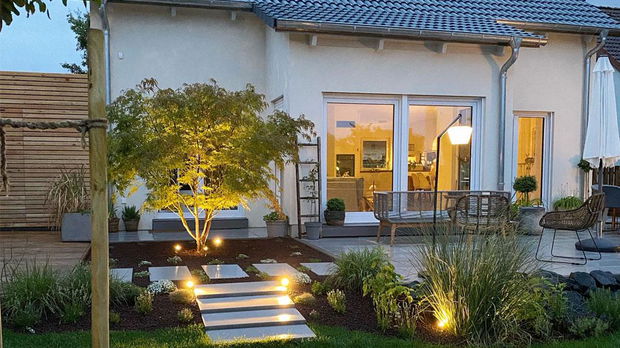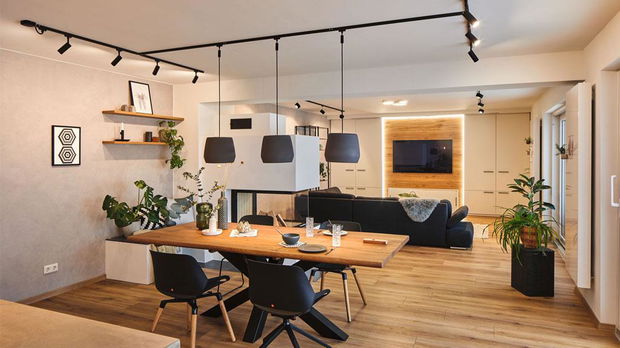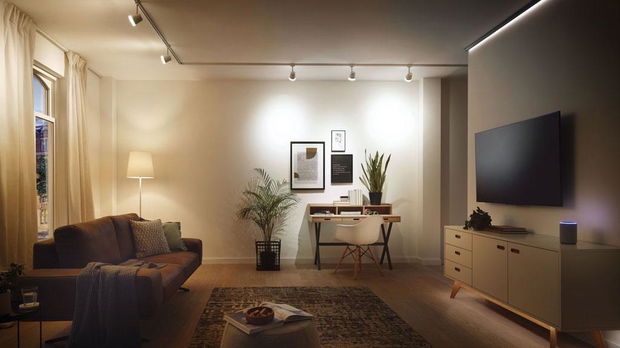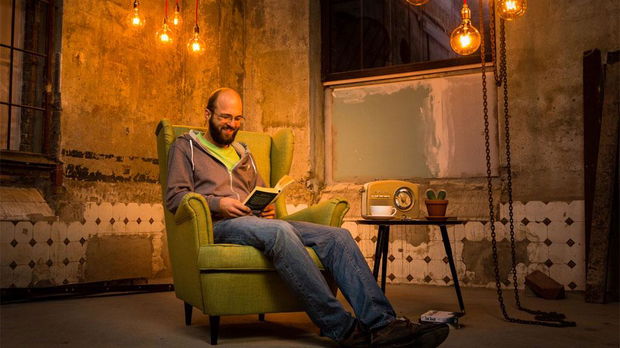You are looking for some general information about lighting design for your home or outdoor area? Then you should also read the Design Tips on this page.
Luminaires suitable for basic lighting include: panels ceiling uplights, pendant luminaires with translucent lampshades or high-output LED strips. These can be cleverly placed to emit their light upwards to the ceiling to create indirect lighting.
Different rooms – different rules
Now that you know about the three types of lighting, you can get started with planning for each room. But: Although the combination of basic, secondary and accent lighting should ideally be a theme for your entire living space, there are other aspects to think about for each individual room and its purpose.
We have put together everything you need to know on our overview page for indoor lighting. Here you will learn about which type of light is right for each room, how to put together the perfect design and what to think about for each living space before you start.
Key Points for Light Planning
- Light up your living space like a professional: your best bet is a combination of basic, secondary and accent lighting, as such a mix is beneficial for the human psyche. Different rooms mean different principles – our section on Indoor Lighting will give you an idea of what to look out for when planning your lighting concept. .
- Provide sufficient orientation lighting for the walkway to your front door and create beautiful light accents in your garden. Have a look at our section Outdoor Lighting for more information and tips to bring light to your outdoor spaces.
- Think about whether or not you want to introduce smart lighting to your home during the initial stages of your light concept creation. Retrofitting is no problem if you don't want to make a decision right now, or are looking for ways to upgrade your existing installation. Have a look at the tips we provide on the subject on the info pages for Smart Homes.

















